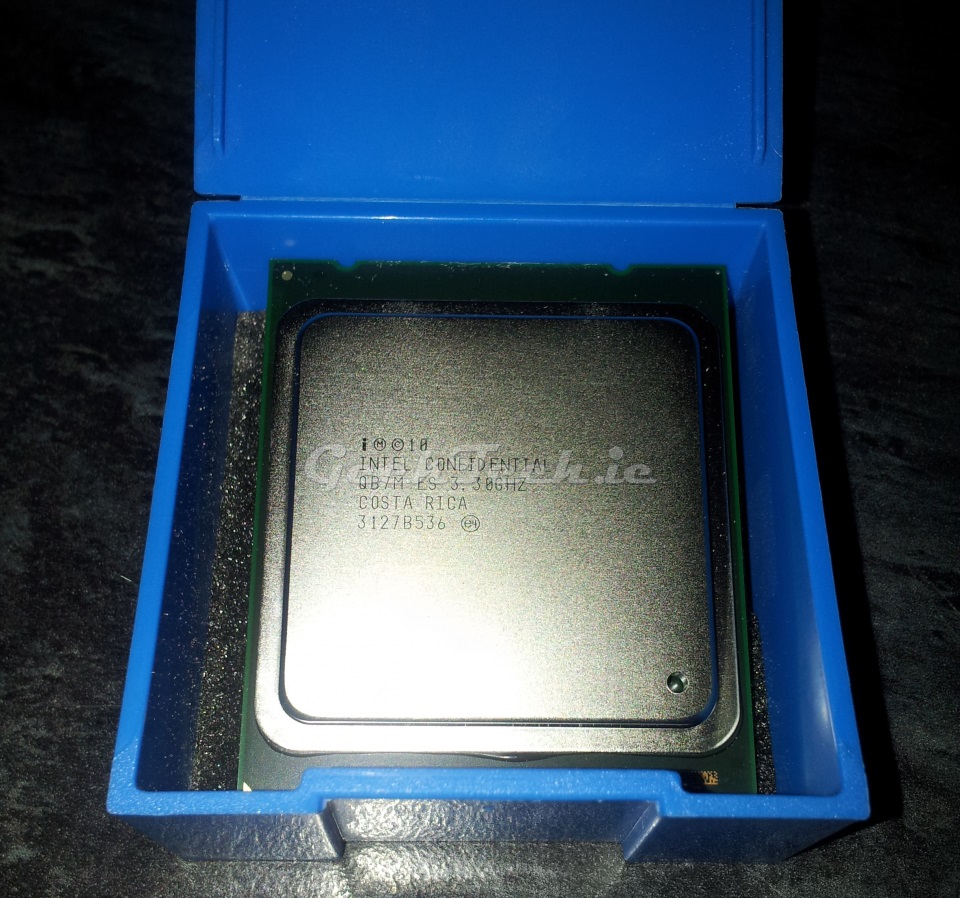Intel have released their newest titan, that is the i7 socket 2011 3960x. While the processor has been out for some months now. It’s time to review it and see exactly what performance the newest tick offers over normal sandy-bridge processors. The problem being that there doesn’t seem to be much of a difference over Sandy bridge except the new socket and the size of the processor is bigger. Now while this isn’t Ivy Bridge. It does seem odd to introduce entire new socket when in fact even the die size still remains the same.

The processor packs with it 6 cores and thanks to Hyper threading we are given 12 threads to have some fun. We can also see the quad channel memory in there aswell. Intel have also crammed 15MB of cache.
 Looking at the die, you immediately notice the massive l3 cache, Which on this case is 15MB. We also notice the fact that there are two fused out cores, these are only going to be used on Xeon 8 core processors. There is no doubt that they huge L3 cache is the reason for the new socket size and there was not enough room for it on the 1155 socket. The 3960x also lacks the integrated GPU, which sandy bridge was also known for, but more on that later. The design of Sandybridge-E keeps with previous design in that the memory controller and I/O is located on the CPU. The overall layout of the cache memory starts with the 32KB instruction cache, 32KB L1 cache and 256kb instruction and L2 cache. The 15MB cache feeds all 6 cores giving them 2.5MB each.
Looking at the die, you immediately notice the massive l3 cache, Which on this case is 15MB. We also notice the fact that there are two fused out cores, these are only going to be used on Xeon 8 core processors. There is no doubt that they huge L3 cache is the reason for the new socket size and there was not enough room for it on the 1155 socket. The 3960x also lacks the integrated GPU, which sandy bridge was also known for, but more on that later. The design of Sandybridge-E keeps with previous design in that the memory controller and I/O is located on the CPU. The overall layout of the cache memory starts with the 32KB instruction cache, 32KB L1 cache and 256kb instruction and L2 cache. The 15MB cache feeds all 6 cores giving them 2.5MB each.
Looking at the list of processors, you can see the 3960x has a base clock speed of 3.3GHz and a turbo frequency of 3.9GHz. The new Sandy-Bridge also adds 4 channels of ram, that means a possibility of up 8 dimms and up to 64GB of ram on a single board obviously depending on the motherboard. That is some serious amount of ram support.

SandyBridge-E uses Intel’s new x79 chipset. The newest chip-set has its pros and cons off its own, but for now let’s have a look at the pros and cons of the processor
Okay, so the missing integrated GPU . The reason for the removal was probably due to the large l3 cache taking up so much space. Intel simply didn’t have enough space. or at least that makes sense, to be honest no one knows what goes on over at Intel. The removal of the on-die GPU means the processor no longer has Quick-Sync support either. This was a great ability to quickly transcode videos without using up your cores and leave them available for other task. This is no longer possible but for most people who didn’t use the quick-sync feature, this shouldn’t even be considered a loss, but pointed out for those that did use it.
Memory Bandwidth
It’s not all bad news, due to the fact that there is no on-die GPU this frees up room for the memory controller. This brings with it quad channel memory support at 128GB/s bandwidth. The speed is marked at 1600MHz with 1 dimm per channel or 1333MHz with 2 dimms per channel.
PCI-E Bandwidth
Intel have also increase the bandwidth of the PCI-E lanes. SB-E supports a total of 40 lanes at 1GB/s each. They also bring along support for PCIe 3.0, that means that once PCIe 3.0 cards become available, the CPU also supports 2 x16 for those high-end sli configurations.
USB 3.0
Okay, So no USB 3.0 with the new x79 chipset. Which means motherboard manufactures will have to continue to use third-party controllers to add support for USB 3.0.
That is enough specs, the 3960x sounds great on paper, but we are here from some real results. check out the next page for the test setup and performance results.



